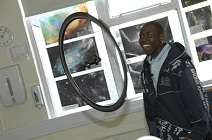Popularity of A-level and GCSE physics keeps on rising

Physics is continuing its resurgence in schools with the number of exam entries increasing again this year.
While there is some way to go to reach the participation rates seen in the early 1980s, the number of students attempting A-level physics has increased year on year since 2006 and entry numbers for GCSE physics are substantially improving, particularly among girls.
The number of students sitting A-level physics this summer was 35,569 – up from 34,509 in 2012 and 32,860 in 2011. Improving A-level participation rates has been one of the aims of the IOP's Stimulating Physics Network (SPN), which is government-funded and was set up in England in 2010 following a successful pilot in 2006-09. The SPN's support for physics at secondary level includes free training for non-specialist science teachers in selected schools.
When the figures were announced in August, the IOP's president, Prof. Sir Peter Knight, said: "Thanks to the SPN, these teachers are gaining the confidence to offer inspiring physics lessons and ensuring that students receive an exciting taste of physics before they are asked to choose the subjects that they will continue to study at A-level and beyond."
More than 55,000 students sat A-level physics in 1983, but by 1990 this had fallen to 45,329 and entries reached their nadir of 27,368 by 2006, before beginning their year-on-year improvement, which has accelerated more recently.
But while the number of girls taking A-level physics has steadily increased, the proportion of students taking A-level physics who are female has hovered around 20-22% for several years. Prof. Knight said: "There is still a huge amount of work to be done to ensure that girls are not denied their entitlement to a good physics education. Not least, we know that anachronistic gender stereotypes persist in many classrooms and these contribute to an outrageous unfairness that we continue to fight against."
At GCSE, the picture for girls' participation was brighter this year. The number of girls sitting GCSE physics had gone up by 4,754 and the proportion of candidates who were female had increased from 46.6% to 48.6%, with girls achieving a higher proportion of the top grades. Overall entries for GCSE physics have increased over a number of years, and there has been a particular trend for students to choose to take physics as a separate GCSE.
Charles Tracy, the IOP's head of education pre-19, said: "We hope that this is an early indication that the work that we and others have been doing has had a positive influence on the choices of 14-year-old girls, by helping them to identify with the subject. Encouragingly, our data suggests that choosing to take full GCSEs in the individual sciences makes it far more likely that students will go on to study the sciences at A-level."
The figures for exam entries cover England, Northern Ireland and Wales, but Scotland has also seen a very slight increase in the numbers of students taking both the Higher and the Advanced Higher in physics. While the proportion of female entrants to physics Higher is 29.3%, which is larger than the proportion of female A-level entrants in the rest of the UK, the IOP's national officer in Scotland, Alison McLure, said this needs to improve further. "We want to see as many girls taking physics as boys. For as long as boys significantly outnumber girls in the physics classroom, we can be sure that there are thousands of able girls in Scotland who are missing valuable opportunities," she said.
Provided by Institute of Physics




















